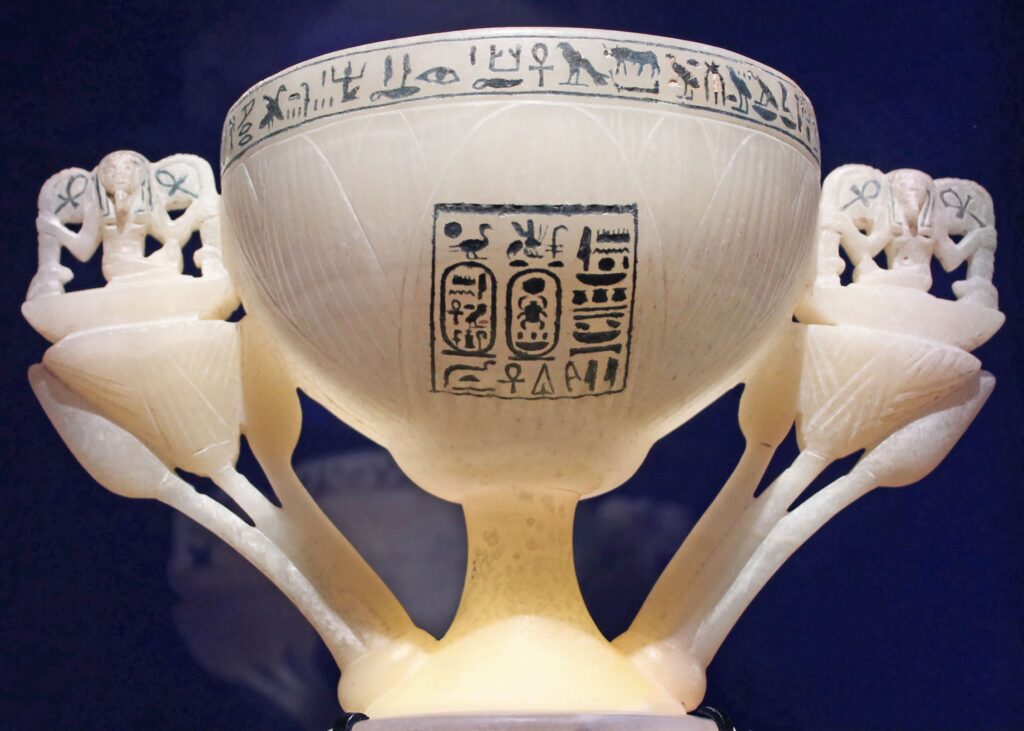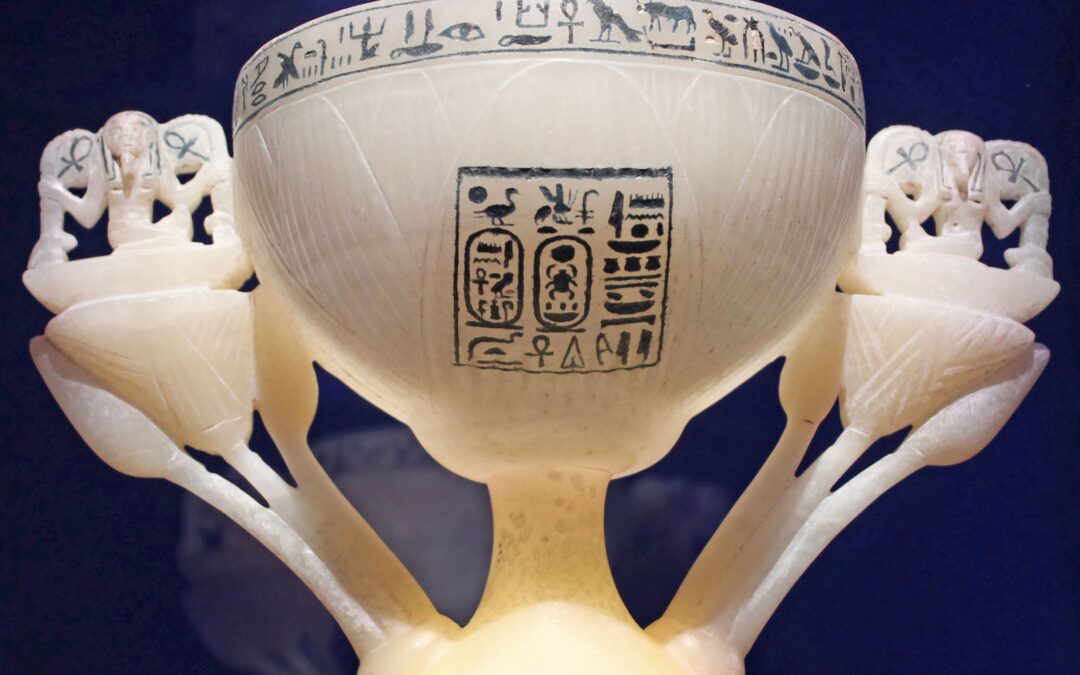The Lotus Chalice, also known as the Alabaster Chalice or the Cup of Wishes, is a chalice dating back to approximately 1,332-1,323 BC and belongs to ancient Egyptian art. It was discovered on November 4, 1922, during archaeological excavations conducted by English archaeologist and Egyptologist Howard Carter.
It was found in the antechamber of the Tomb of Tutankhamun, also known as KV62, located in the Valley of the Kings, west of the ancient city of Thebes, in Egypt. Shortly after its discovery, it became part of the art collection of the Egyptian Museum in Cairo.
Description
The chalice is 18.3 cm in height, 28.3 cm in width, and 16.8 cm in depth. It is made of alabaster and is carved from a single piece. The chalice is shaped like a white lotus in full bloom, identified by its rounded petals.
The handles’ supports are shaped like blue lotus flowers flanked by buds that grow upward. In addition to the tips of the petals, the figure of the god Heh, the god of infinite space and eternity, is represented in a basket.
The god appears in profile, with his body facing sideways, his arms raised, and his head facing forward. In each hand, he holds a palm branch with notches representing the years. The ankh symbol, a symbol of life, is represented at the end of each palm branch.
It is worth noting that the kneeling image of the god Heh is a typical representation since it corresponds to the hieroglyph for the number “one million.” It symbolizes the infinite and eternal life of Pharaoh Tutankhamun.
Hieroglyphic inscriptions filled with blue pigment can be seen on the upper edge of the body and in the central part. On the main lotus forming the body, there is an inscription that reads from right to left. It displays the name of the royal throne “Nebkheperure” and the cartouche with the name of Pharaoh Tutankhamun. Additionally, it includes the following epithet:
“Favorite of Amun-Ra,
lord of the thrones of Two Lands and ruler of heaven,
giving life forever.”
The inscription on the upper edge of the chalice should be read in two directions. From left to right, starting with the central ankh symbol, the full fivefold title of Pharaoh Tutankhamun can be read. Its approximate translation is as follows:
“May Pharaoh live,
the almighty of Horus,
beautiful from birth,
the two good ladies of law,
that pacifies the Two Lands,
the golden Horus exalted with crowns,
that appeases the gods,
Pharaoh of Upper and Lower Egypt and Lord of the Two Lands,
given life.”
From right to left, starting again with the ankh symbol, the approximate translation of the inscription is as follows:
“Long live your Ka,
may you spend millions of years,
you who love Thebes,
sitting facing the north wind,
contemplating your eyes’ happiness.”
Finally, it should be emphasized that due to the inscription, the English archaeologist and Egyptologist Howard Carter called the Lotus Chalice the Cup of Pharaoh’s Wishes. As a curiosity, note that the inscription of the wish of the Lotus Chalice is cited on the second tombstone of Howard Carter’s grave.
Currently, it is on display at the Egyptian Museum in Cairo, Egypt.









